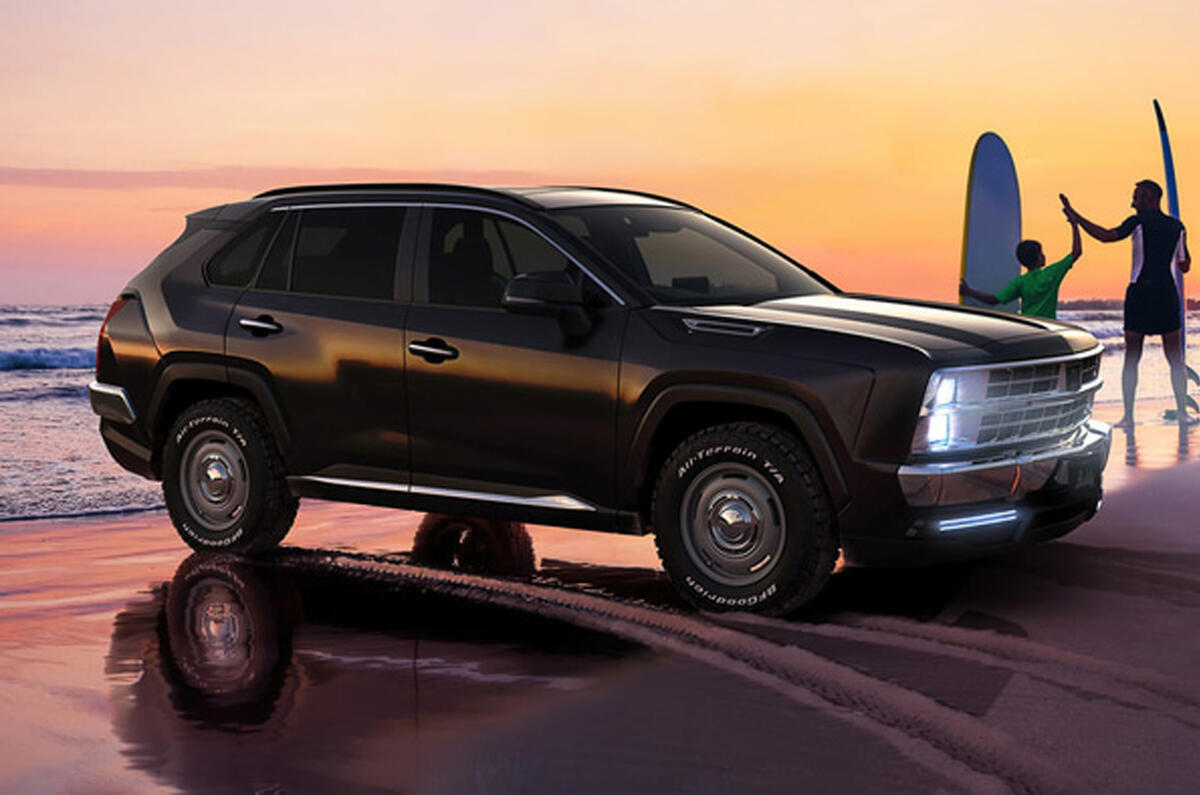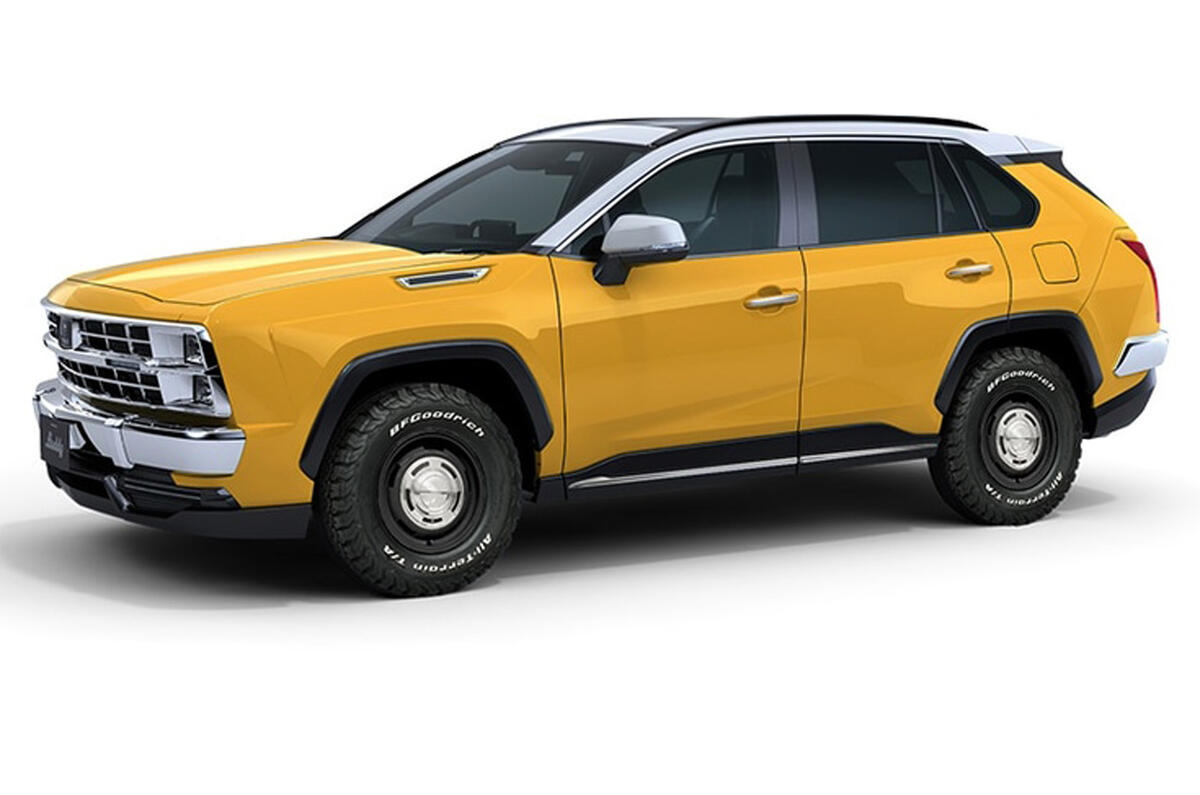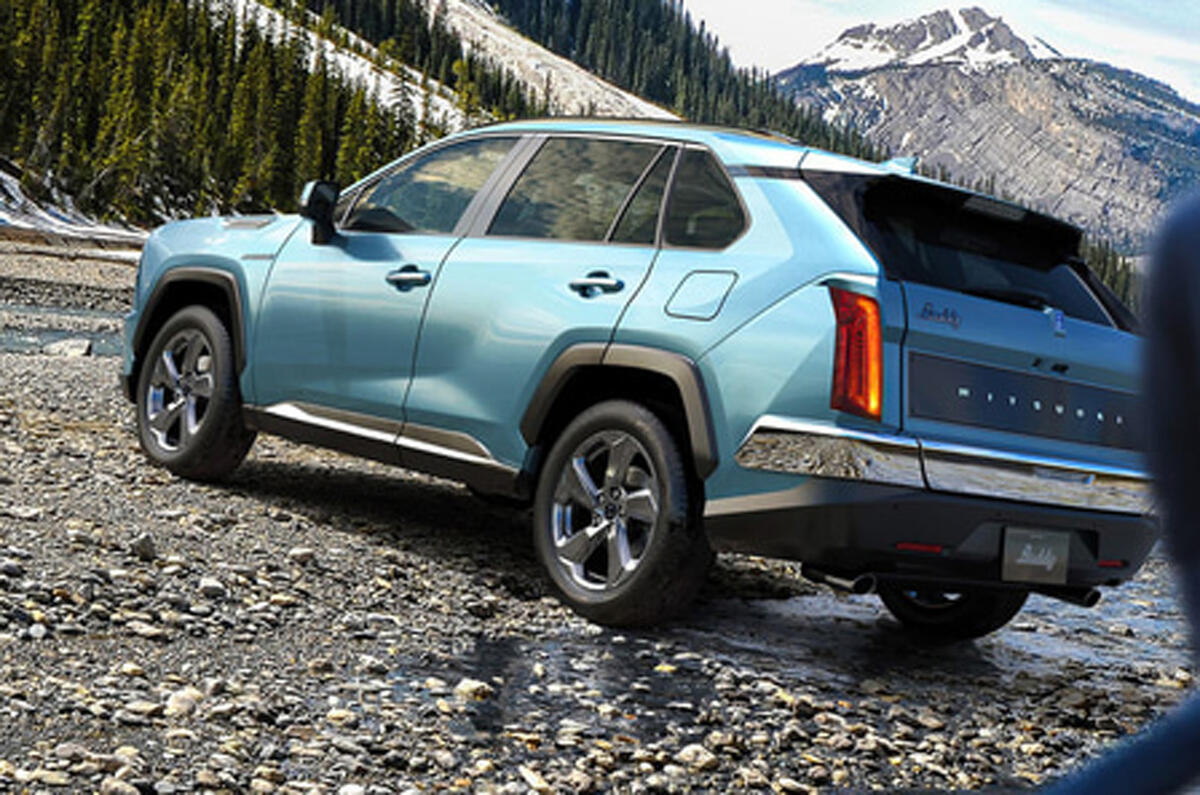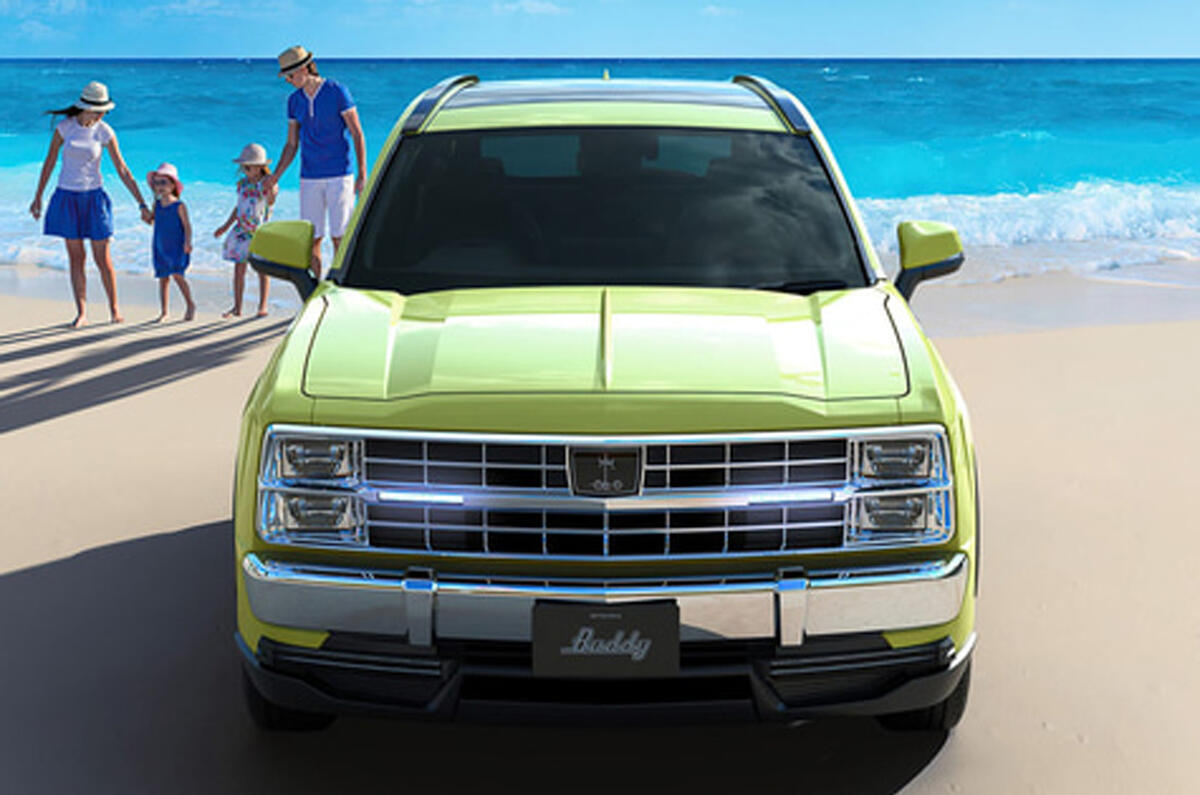Mitsuoka Buddy revealed as retro-styled Toyota RAV4

Japanese coachbuilder Mitsuoka has given the Toyota RAV4 the retro American SUV treatment to create the Buddy.
While Suzuki's revisions to the RAV4 amount to a new grille and some bespoke badging, Mitsuoka's treatment is much more dramatic. The Buddy's heavily reshaped front end, for example, includes a prominent chrome grille and stacked headlights reminiscent of the Chevrolet K5 Blazer, complemented by a thick chrome bumper and overriders.
The Buddy is more recognisable as a RAV4 from the side but receives an array of additional body creases and chunky All-Terrain T/A tyres wrapped around 1980s-style steel wheels with chrome hubcaps.
A set of more conventional five-spoke alloy wheels with low-profile tyres is also available.
The rear-end makeover is much more extreme. The RAV4's tail-light clusters make way for upright items seemingly inspired by cars like the Jeep Grand Wagoneer and Cadillac Brougham, while the tailgate is decorated with a wide contrasting trim panel and chrome model lettering.
There are no naturally aspirated, large-capacity V8s in the engine line-up, however. The Buddy can be specified with either a 2.0-litre four-cylinder turbo petrol engine or a 2.5-litre four-wheel-drive petrol-electric hybrid powertrain, both of which are carried over wholesale from the RAV4.
Mitsuoka has yet to release any images of the interior, but it's likely to gain some old-school flourishes, perhaps including teak panelling and piped leather.
There's no word yet on whether the Buddy will be made available for global sale, but order books will open in Japan on 26 November. Paint colour options include 80s Mint, North Carolina Blue, Grange Denim Blue and 95 Yellow, and some are available with a contrasting roof option.
Mitsuoka's flagship model is the Roadster, a rebodied Mazda MX-5 with styling influenced by classic British sports cars. When it launched in selected UK dealers in 2015, prices began at £53,800 - roughly twice the cost of a new MX-5.
The company was previously best known for its vintage-style take on the Nissan Micra and the divisively styled Orochi sports car, which sat atop a bespoke spaceframe and took is power from a mid-mounted, Toyota-derived 3.3-litre V6. Sold exclusively in Asia, production of the extravagantly designed halo car was limited to around 400 units and ended in 2014 after a series of special editions.





Nouvelles connexes


